Here is a list of useful iconic bridges in Ireland that all have a story behind them!
O’Connell Bridge, Dublin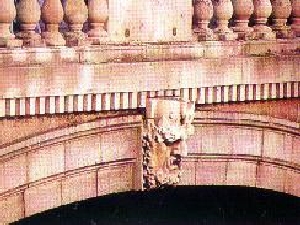
At the very hub of the city, O’Connell Bridge, formerly Carlisle Bridge, was built in 1790 as one of the links in the Wide Streets Commissioners’ plan to connect north and south with a great axial route. The plan was completed when Westmoreland Street was driven through to College Green a few years later. In 1880 the bridge was widened and is now famous for being about as broad as it is long.
The Foyle Bridge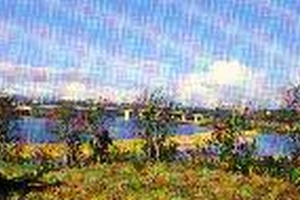
The Foyle bridge spans the River Foyle downstream from Caw to Culmore. Completed in 1984 this bridge serves both functional and leisure purposes as it is one of the most popular walks in the city. The majestic backdrop of outlying Donegal and Magilligan coupled with the nearby parklands are seen clearly from this gently rising curved bridge. Location : Spanning from Caw to Culmore. It is open all year.
O’Brien’s Bridge, Clare
If you continue southwards from Killaloe towards Limerick you will shortly (6 km) reach the small village of O’ Brien’s Bridge. There are two bridges here, one of modern construction over the canal, and the older stone bridge over the river. At this point the flow of the river is obstructed by a massive weir. The bulk of the flow is diverted into an artificial canal - the headrace for the hydro-electric works at Ardnacrusha. The remainder follows the old line of the Shannon, much diminshed from its former impressive course through the Falls of Doonass and the celebrated fishing village of Castleconnell. There are still, however, pleasant walks by the old river. O’ Brien’s Bridge is a noted centre for coarse angling. Crossing the bridge to the Co. Limerick village of Montpelier and taking the R466 road to the left for 2 km you reach Parteen Weir and fish-hatcheries, from which the ESB restocks the Shannon fisheries now in its management. Further on one passes the Clare village of Clonlara, only a short distance from Ardnacrusha where Ireland’s first hydro-electric station (1925-29) harnessed the Shannon for power production.
The Parliament Bridge, Cork
Near south Mall is Parliament Bridge, built in 1806 to commemorate the Act of Union. Walk across the bridge to George’s Quay to see Fitzpatrick’s second-hand shop, with its bizarre display of bicycles , cartwheels , farm implements and other assorted bric-a-brac on its facade. A short walk away, on Sullivan’s Quay, is the Quay co-op , a popular restaurant and meeting-place .
Carrick A Rede Rope Bridge, Antrim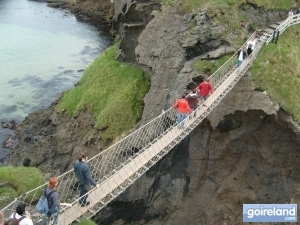
Carrick A Rede (which means the rock in the road) was given this name because the island and adjacent shallow channel between it and the mainland act as a barrier to migrating salmon. They are deflected north into the nets laid by local fishermen who use the bridge to get to the fishery on the island. A rope bridge has spanned the 60ft gap between the mainland and Carrick a Rede Island for at least 200 years. It is put up in April and remains in place until early September. Great care must be taken when crossing the bridge.
There’s much more to see and do after a visit to the bridge. This part of the North Antrim Coast abounds in wildlife. Carrick a Rede has a thriving seabird colony where razorbills, guillemots, kittiwakes and fulmars are easily seen. Sheep Island off shore has the largest cormorant colony in Ireland. Archaelogical research has discovered the remains of an ancient promentory fort at Larrybane (which means ‘the Ancient White Site’), and fossils are frequently found in the large disused limestone quarry. A walk along the cliff top path gives excellent views of Rathlin Island and the west coast of Scotland.
The Ha’penny Bridge, Bridge 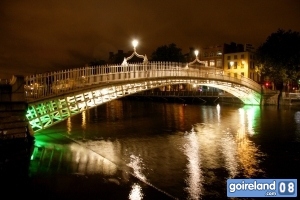
The elegant metal pedestrian bridge spanning the Liffey between Merchants’ Arch and Liffey Street is one of Dublin’s best known landmarks. Erected in 1816, it was among the earliest cast-iron structures of its kind, and was named Wellington Bridge.
Although its official title is now Liffey Bridge, it is universally known as the Ha’penny Bridge after the toll levied on its users. No payment is now required to take this delightful route across the river!
At the bustling, Bohemian heart of the quarter, Crown Alley meets Merchant’s Arch. The archway leads to Wellington Quay, with the Merchant’s Hall (1821) to the right, and straight ahead to the best way over the Liffey, the Ha’penny Bridge.
Knock Bridge, Portadown, Armagh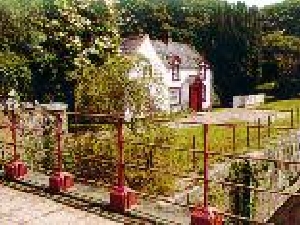
Knock Bridge is connected to Moneypenny’s Lock by a pleasant walkway. As was frequently the case on the Canal, the towpath passes under the bridge. Coins from the reigns of Geroge III and Geroge IV found in the waters under this bridge are reminders that this was once a favourite spot for card players to meet.
Craigavon Bridge, Derry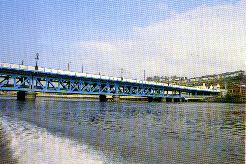
The first bridge built across the River Foyle was a wooden structure erected in 1789-91. The structure allowed for a drawbridge as the inhabitants of Strabane had navigational rights to the river. It was built between Bridge Street and Fountain Hill. The second bridge was a steel structure built in 1863 a little further upstream near the site of todays Craigavon Bridge. This was completed in 1933 and the two tier structure allows the lower deck to carry goods on rail tracks between the city’s railway stations. The lower deck has been converted for road usage now and both decks of the bridge carry a heavy flow of traffic to and from the city. Location : Carlisle Square to Duke Street Craigavons’s two large artificial lakes are used for water sports and trout fishing.
